Montbrun-les-bains is a village in the DrÃīme provençale, perched above the Toulourenc valley, the river that borders the northern slope of Mont Ventoux. The houses with high façades (some of them up to six storeys high), supported by buttresses, were tightened on the steep hillside. They give a unique look and character. Montbrun-les-bains is on the "official" list of the most beautiful villages in France.
Protected by the Baronnies Mountains, the Plateau d'Albion and the Mont Ventoux, Montbrun-les-bains benefits from a micro-climate and offers its visitors a wide range of "natural" activities: hiking, cycling and mountain biking allow you to discover a region with splendid landscapes and an exceptional terroir. In June, lavender fields and lime trees bloom, and their subtle fragrances perfume the atmosphere. Montbrun-les-bains is part of the Parc naturel rÃĐgional des Baronnies provençales created in 2015.
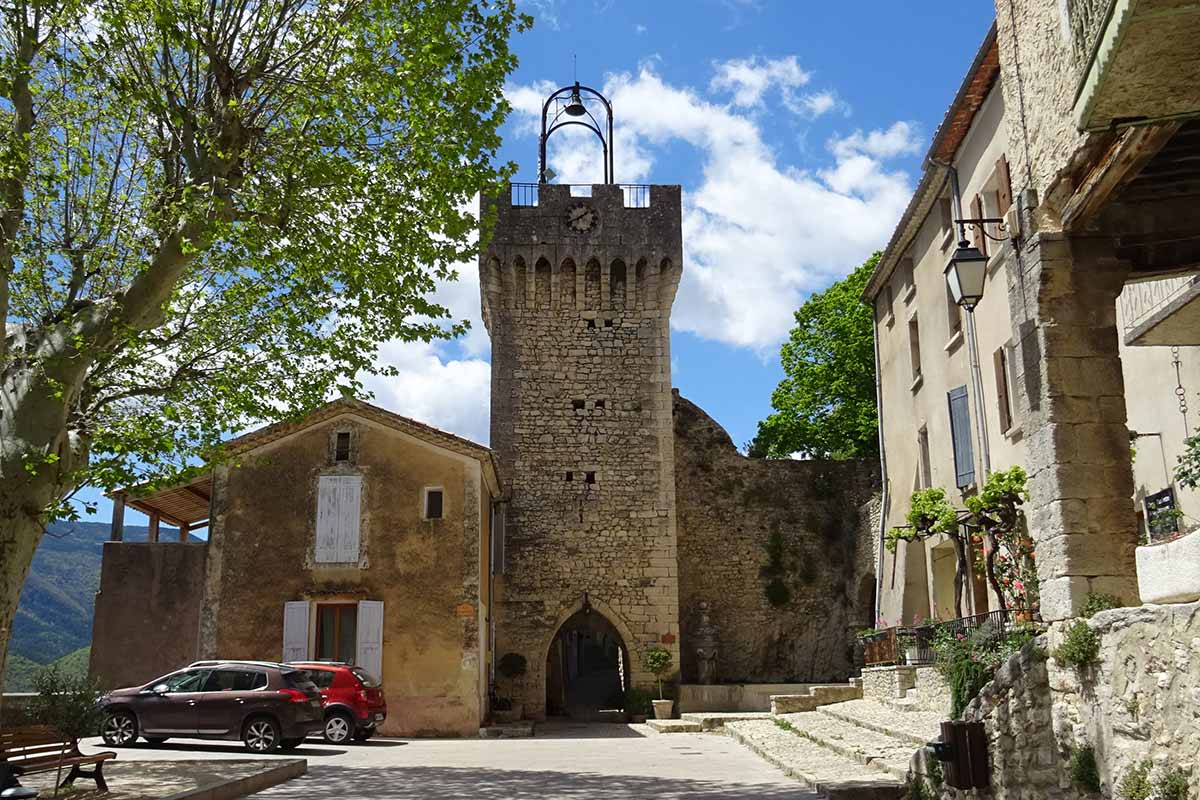

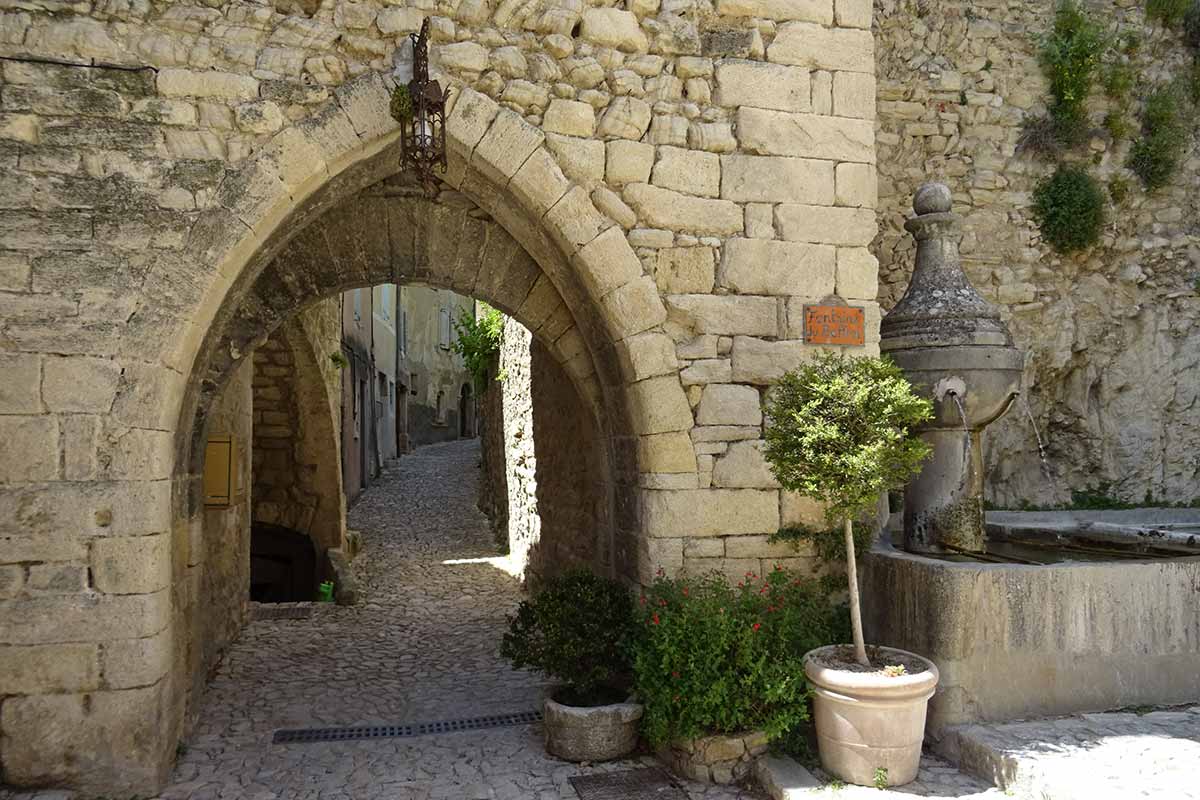
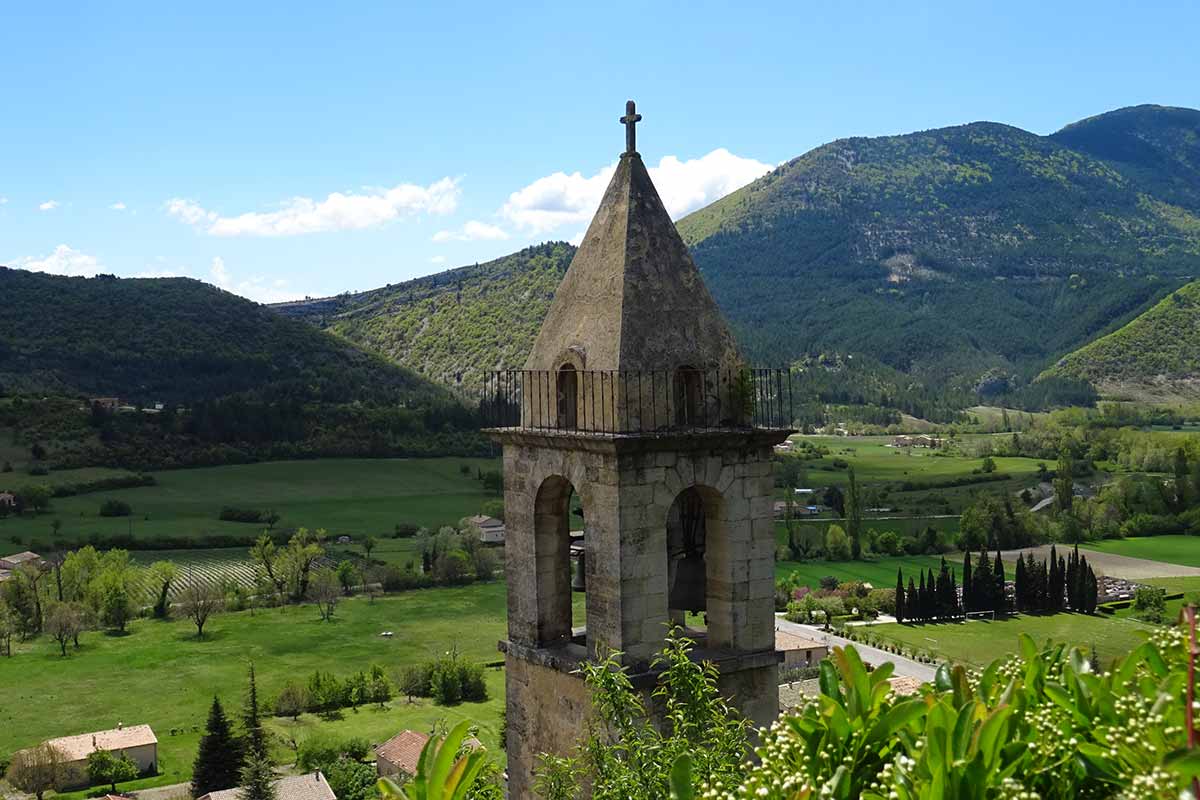
The entrance to the old village is through the medieval gate topped by a belfry. The village has a spring that never dries up, it has 14 fountains, a very precious asset, an ostensible sign of prosperity in the Middle Ages until the Industrial Revolution. The narrow cobbled streets lead to the top of the village, crowned by the imposing ruins of a castle, ruined by Catholic troops, dismantled by royal decree in 1560, rebuilt by Charles du Puy-Montbrun and then abandoned after the Revolution, it is now in ruins.
The Church of Notre-Dame, whose bell tower (added in the 19th century) can be seen, dates from the 12th century, and has since been extensively modified. It became a temple by decision of Charles Dupuy-Montbrun from 1560 to 1579. The interior of the church offers a remarkable decoration, frescos, the oldest of which are from the 17th century and in the choir a beautifully decorated altarpiece (17th/18th century) attributed to Bernas, a famous family of Mazan artisans
Charles du Puy-Montbrun (1530-1575), the "brave captain", Protestant warlord
This lord of Montbrun left bloody memories in the DauphinÃĐ and Provence regions. He is the descendant of an old noble family, whose members are traditionally men of war in the service of the King of France. Charles fought for the kings of France François 1st and Henri III, he won a scar at the Battle of Renti, which earned him the nickname "le balafrÃĐ". He converted to Protestantism in Geneva through his sister, and returned from service as a warlord as lieutenant to the sinister Baron des Adrets and DauphinÃĐ and in Provence, notably during the massacre committed during the capture of the fortress of Mornas. He joined the Huguenot army of the Prince de CondÃĐ during the Third War of Religion, and participated in the Battle of Montcontour (1569) in Poitou, where the Huguenot troops of Admiral de Coligny were defeated. He returned with his weakened troops to his domain in the DauphinÃĐ, and beat the Baron de Gordes who had been waiting for him at the RhÃīne crossing.
Back on his land, he rebuilt his castle destroyed by the Catholics, renewed his strength and took the lead in a small army of which he was the feared captain, waging a partisan war. Very popular among Protestants, he has the reputation of being a man of sincere conviction but he is a cruel warlord with the defeated. He besieged and took the city of Serres in 1574, and tried to take Grenoble, which resisted him. He was taken prisoner by the Catholic troops of the Baron de Gordes near Die. Judged and sentenced quickly, Charles du Puy-Montbrun was beheaded in 1575 in Grenoble

The thermal baths of Montbrun-les-bains
The village dates back to Roman times. Undoubtedly the Romans already knew the particularity of two springs of Montbrun are the sulphur waters cure rheumatism and respiratory diseases, helped by a dry and sunny climate, protected from the wind by the surrounding mountains. The thermalism took off in the 19th century until 1914. The Marquis d'Aulan had the ChÃĒteau des GipiÃĻres, a superb thermal building built on the model of the Baden-Baden one, opened its doors in 1866. Success was soon to come, the spa then offered 50 bathrooms and, 8 shower rooms, 4 vaporarium and 100 homes for people taking the waters. In 1887 the town council renamed the village Montbrun-les-bains. However, the activity declined and ended with the Great War.
The abandoned building was bought by Casino, a company that housed holiday camps. The municipal council is working to revive the thermal activity that resumed in 1987. In 1997 the French thermal group Valvital took over the activity and, enjoying growing success, a new building was built just next door in 2006. It treats respiratory tract disorders and rheumatism. Today, the establishment welcomes 2500 people taking the waters each year, a godsend for the municipality, which benefits from the economic spinoffs. The adjacent estate of ChÃĒteau des GipiÃĻres is now a holiday residence with a restaurant.
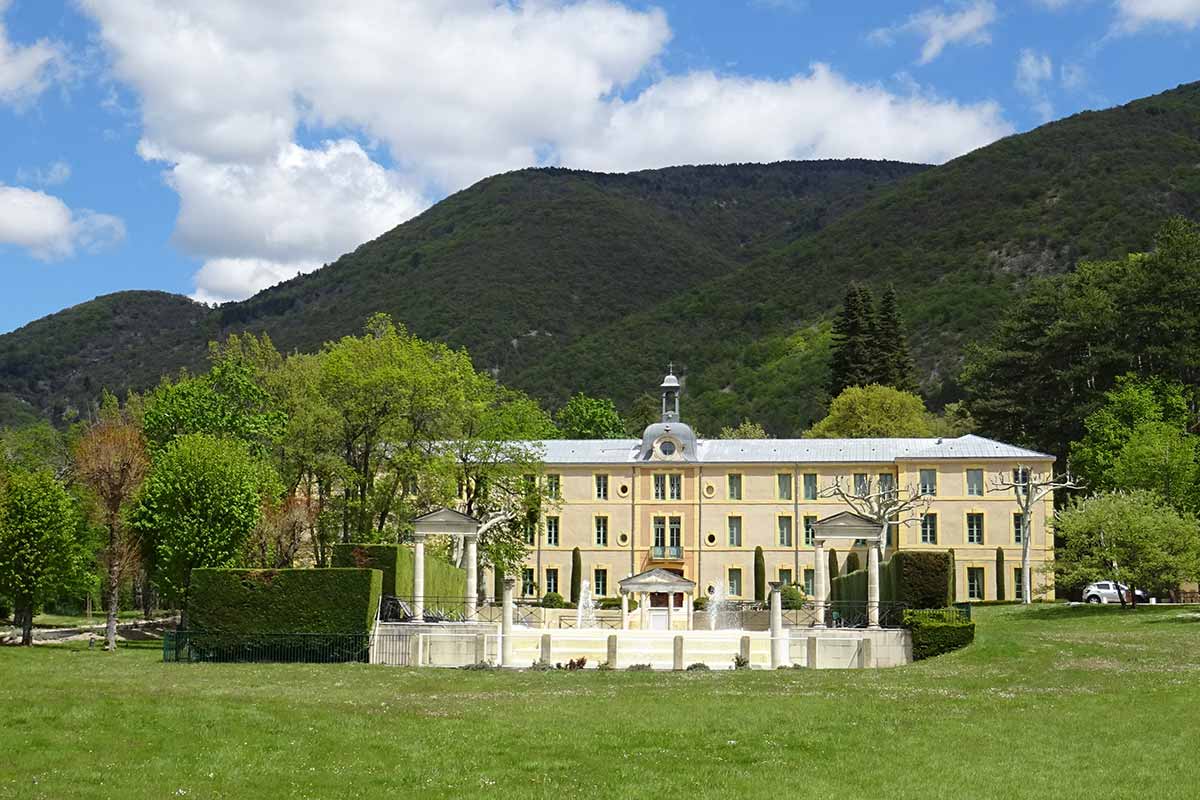
Visit Montbrun-les-bains in photos : slideshow
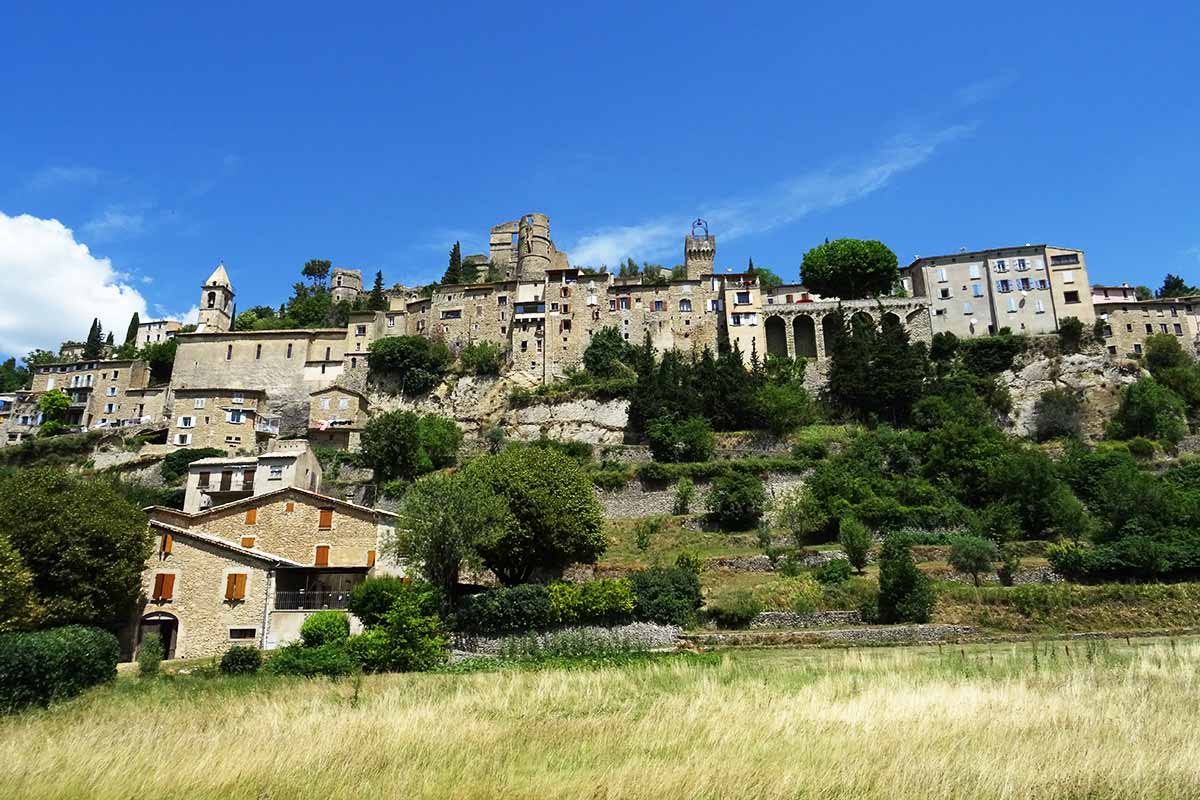
Montbrun-les-bains village in Provençal Drome
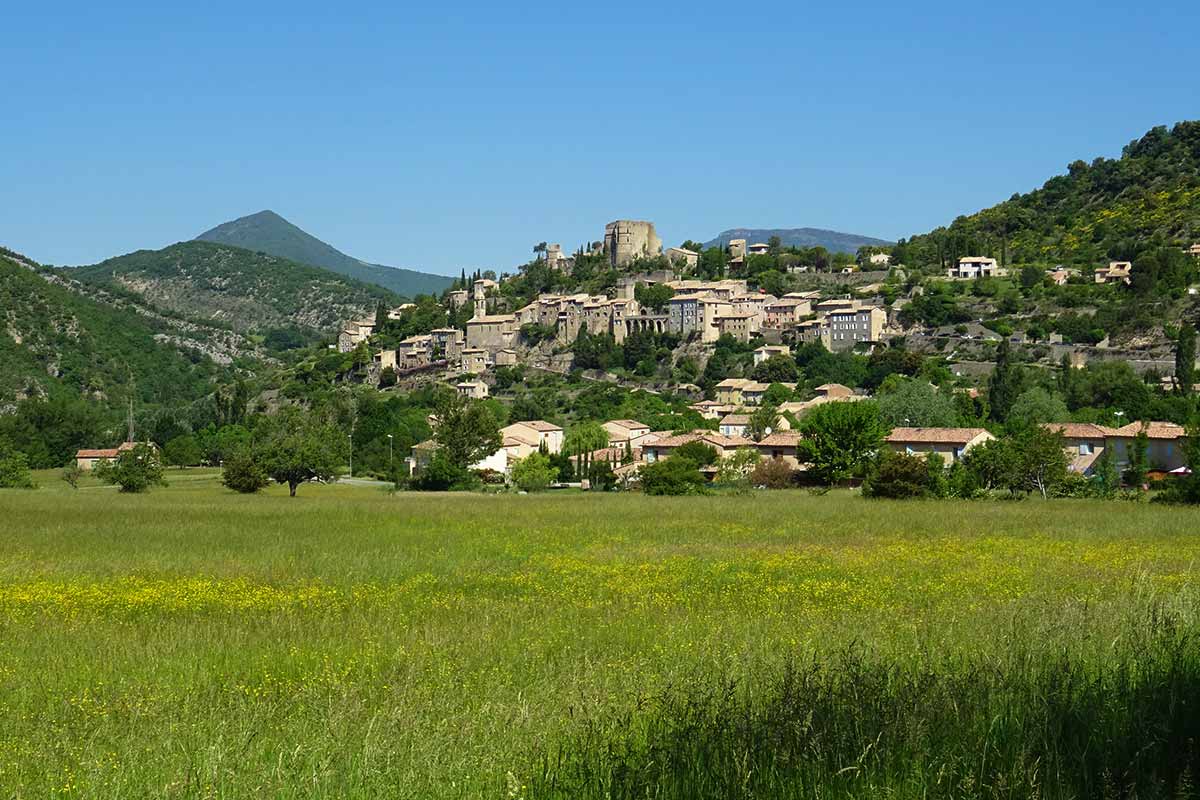
Montbrun-les-bains village in Provençal Drome

Montbrun-les-bains village in Provençal Drome
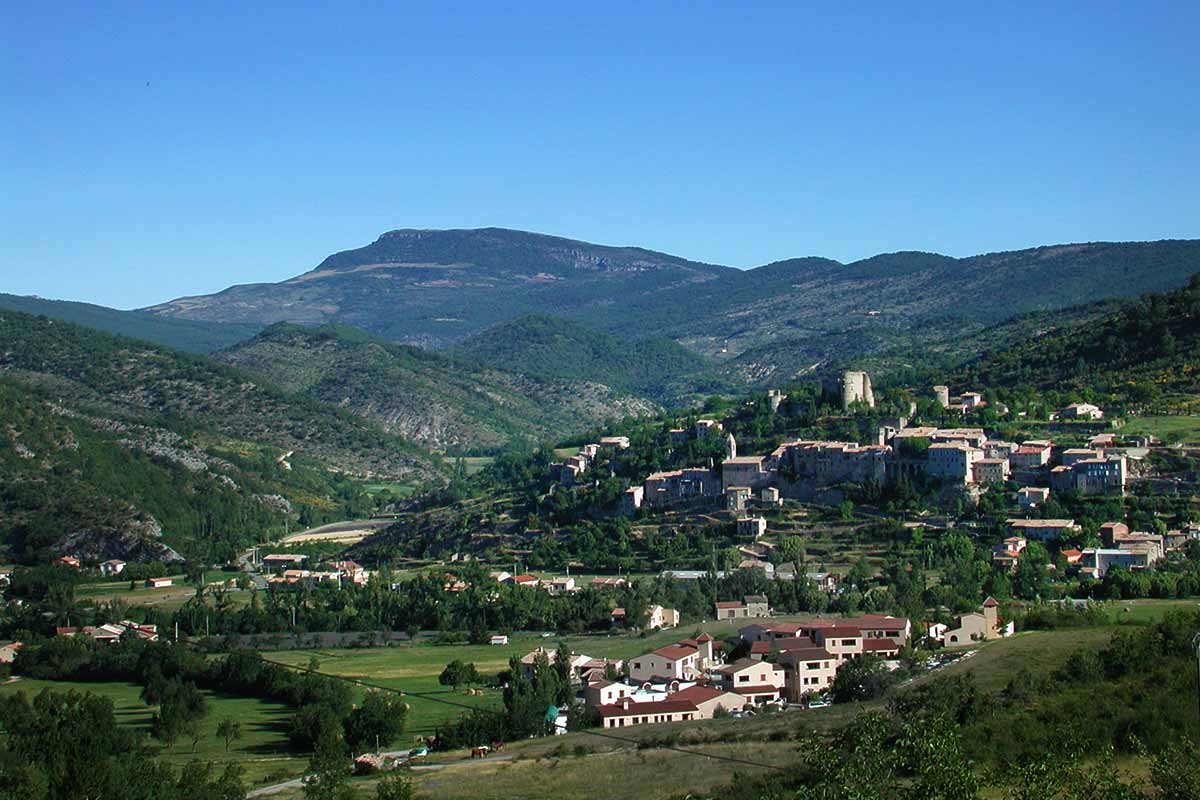
Montbrun-les-bains eand the Montagne du Buc

Castle of Montbrun-les-bains

Medieval gate and fountain in Montbrun-les-bains
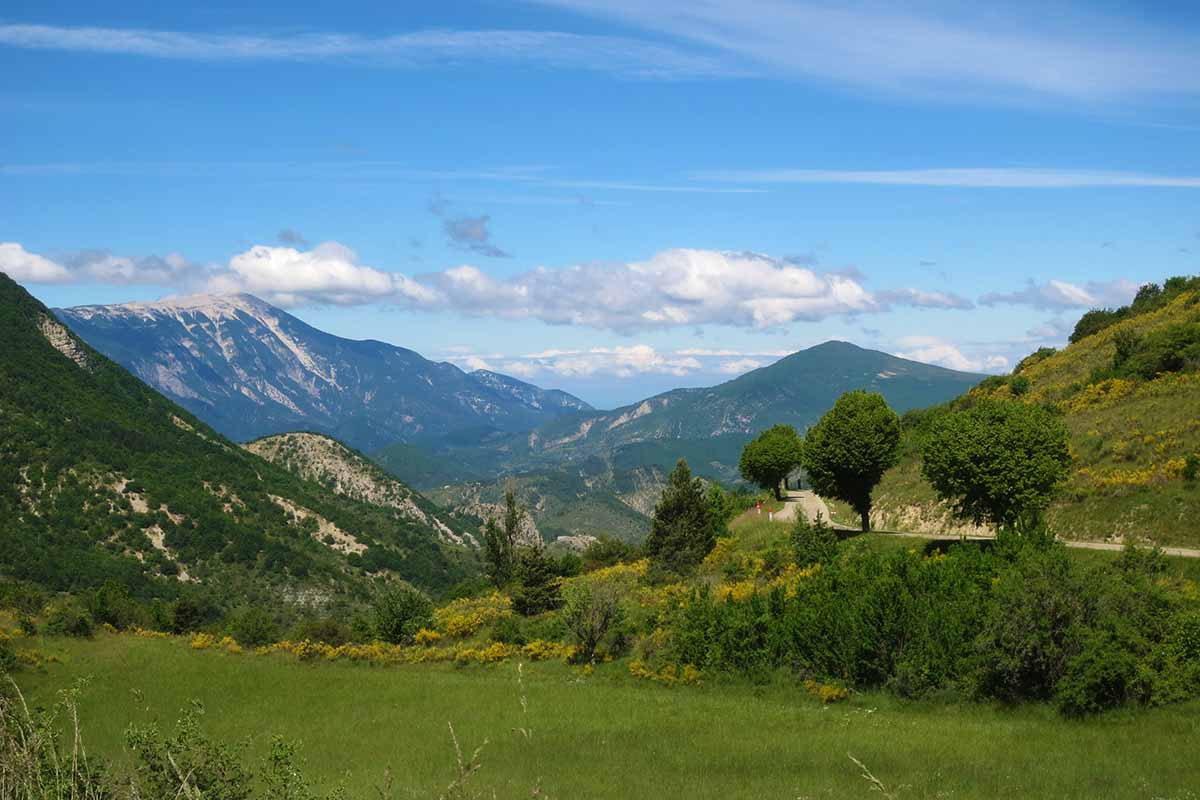
Overview over the Anary valley and the Mont-Ventoux from the Col de MacuÃĻgne

Bell tower of the church Notre-Dame in Montbrun-les-bains

ChÃĒteau des GipiÃĻres in Montbrun-les-bains

Calade à Montbrun-les-bains

Belfry square in Montbrun-les-bains
Accommodation and practical information
Selection of bed and breakfast in Drôme provençale on the portal of guest houses in Provence
Tourit office website : www.baronnies-tourisme.com
Sights and activities :
- The old perched village
- Montbrun Spa: valvital.fr
- Lavender festival in FerrassiÃĻres on the 1st Sunday of July
- Natural Wellness Day - 1st Sunday in September
- Votive festival on the second weekend of September
- Cheese market on the 1st Sunday in April
- Weekly market on Saturday mornings in the city centre.
- Farmers' market on Monday evening in Montbrun les Bains (July/August)
- Paragliding, Cannyonning, Climbing
- Hiking and mountain biking
- Anary Valley, village of Barret-de-Lioure and Col de MacuÃĻgne (D542)
- Haut-Toulourenc Valley towards Aulan (D159)

Coming to Montbrun-les-bains
GPS coordinates N 44°10'30'' - E 5°26'36''
The town of Montbrun-les-Bains is located in the DrÃīme department, between the departments of Vaucluse and Alpes de Haute Provence.
Location : altitude 630 meters, 440 inhabitants, 7 miles from Sault, 9 miles from Sederon, 16 miles from Buis-les-Baronnies, 22 miles from Vaison-la-Romaine

![Drôme provenįale [fr]](/images/version_francais.gif)
![Drôme provenįale [en]](/images/version_english.gif)


